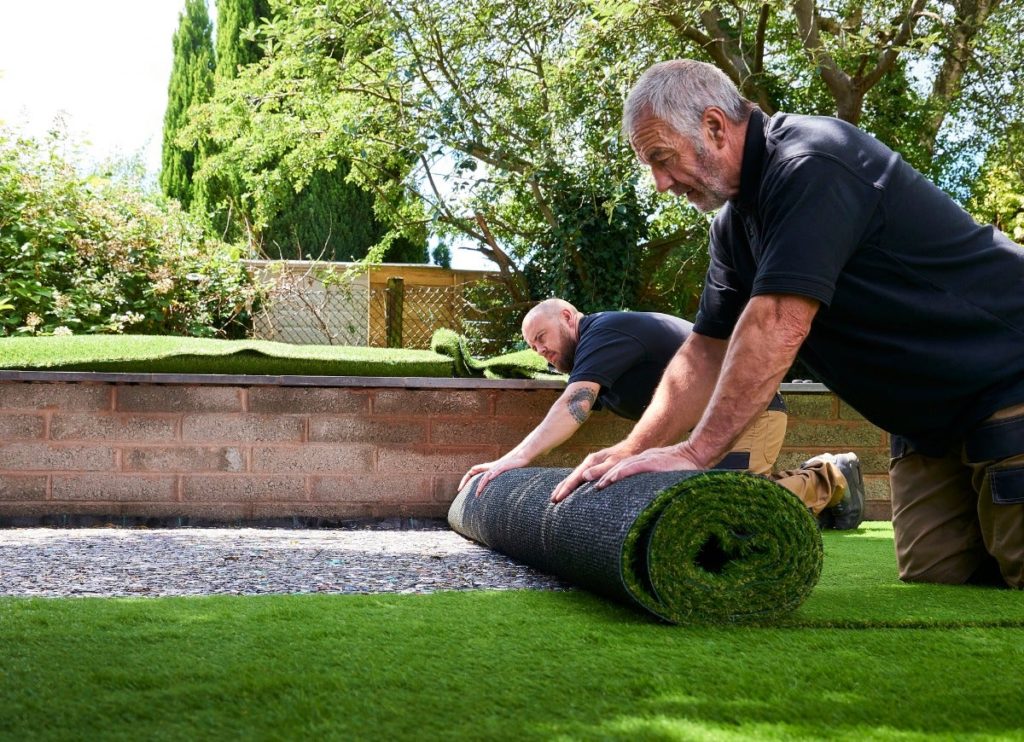No matter how big or small the turf installation, there is a particular process that is followed by the installation company. The entire process is explained in detail by experts so it can help to answer any questions you might have about turf installation.
Underground Inspection Before Installation
Before laying artificial turf, an installer must determine whether or not there are any possible risks underground. Much of the inspection and installation overview can be found at https://www.turfdistributors.com/. A detailed outline starts with the inspection process.
They will be on the lookout for the following:
- Lines of electricity
- Water supply lines
- Pipes and sprinkler heads
- Drainage systems
Before commencing the installation procedure, all cables will be relocated roughly six to eight inches in length from your preferred grass border to safeguard them from damage. Later, the wires will be resurrected on top of the soil beneath the lawn. To minimize uneven grass installation, any actively utilized sprinklers will be concealed where they connect at pipeline, and any unused sprinklers will be marked all throughout the area.
Prepare the Environment
After locating any potential subsurface risks, it’s time to prepare the region in which the turf will be put. The professional approach to doing this is as follows:
Remove Roots and Weeds
First, the installation crew will spray the entire area with a non-toxic herbicide (Herbicides | US EPA) to destroy any grass and weeds. They will make sure to complete this step at least 2 weeks before your preferred installation date to provide enough time for the root systems to die out. The installation professionals will not begin installing artificial turf until they are satisfied there is no trace of plant life across the prepared area.
Remove the soil
The readied area’s top layer of soil will then be removed to make way for the new base material that will sit underneath your artificial turf. A professional installation crew will recommend removing around 3 – 4 inches of dirt to make room for the new foundation. Then they tamp down the complete area once the soil has been replenished.
Create a Drainage System
The installers won’t worry about the need for a drainage network if your lawn has well-drained soil. If, on the other hand, they will have to put artificial grass on top of any poorly drained soil, they’ll need to create a drainage system to move precipitation away from the yard and prevent floods.

Install the Bender Board and any optional barriers
Placing a bender board that divides your artificial grass from the remainder of your lawn and keeping it within its prescribed perimeter is the final stage in the preparation process. They can also add gopher wire to prevent vermin from burrowing through the new turf and a weed screen to avoid undesirable plants from invading your fake grass if you like.
Install a Base Layer
Before laying the lawn, they must establish the sub-base layer. This layer helps water drain and is usually crushed stone, gravel, basalt, or rock. They’ll spread 3 to 4 inches of sub-base using a shovel or spade over the ready area.
Next, they’ll add 10-15 mm of sharp sand to the crushed rock. This layer levels the sub-base and prepares it for artificial turf. They’ll use a yard hose to irrigate the sand after it’s in place.
They’ll need to compress and level the sub-base before laying the lawn because it will be loose and uneven following application. Installers will compact the sub-base with a tamper and plate compactor to 90% from its original depth. The compacted base should feel concrete-like yet drain well. After compacting, they will flatten or fill uneven places.
Install synthetic grass
The grass will be laid out and marked per the installation area. Next, they will cut and install the turf per their dimensions and markings. To install the grass, they roll out each section over its allotted installation box and give it a gentle shake allowing air to get in between the compacted foundation layer and the turf. (They won’t drag the turf out over the compacted subbase, or it would destroy the beautiful surface).
The installers will stretch the turf after installation to minimize heat expansion and wrinkling. For more information on heat expansion, click here. Once the grass is down, seam it. Seaming works best with two individuals; thus, you’ll usually encounter two-person teams.
After they seam the artificial grass pieces together, they’ll nail them through into the ground every several inches, being cautious not to trap grassy fiber under each nail. Finally, they will stake or pin the new turf’s perimeter. They will be sure that they don’t pound too hard to prevent lawn dips.
Finishing touches
After the installers have secured the turf, they will then cut any undesired grass and surplus turf. They will cut around trees and other protrusions when putting in the lawn.
Finally, they will need to use filler to prevent the grass from matting. Before applying infill, installers will brush the grassy fibers upward and ensure they’re dry. They’ll shovel in 1 to 1.5 lbs per sq foot of turf. They will then back-drag it across the surface or just use a sand spreader.
Next, they will brush or sweep the artificial turf until the infill substance falls below the grass strands. Finally, they will check for even coverage and add infill if needed. When the filler is gone, they water the fake turf to set it.






